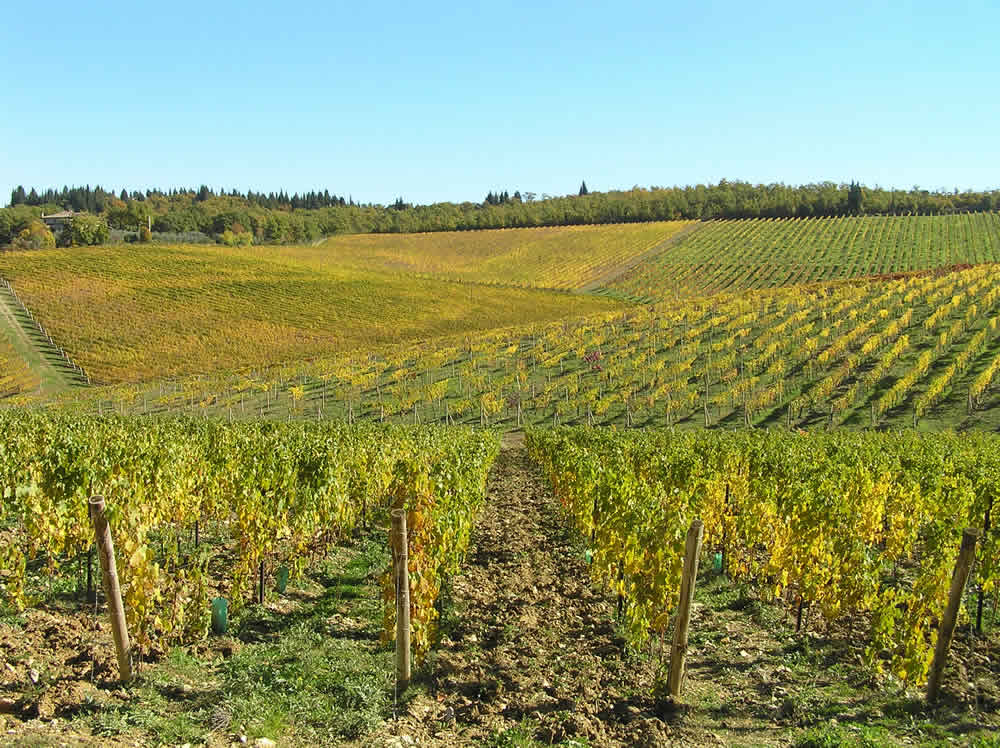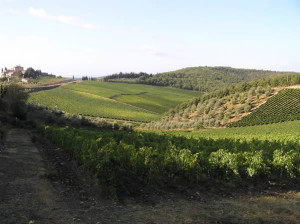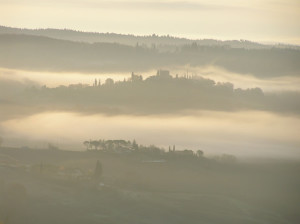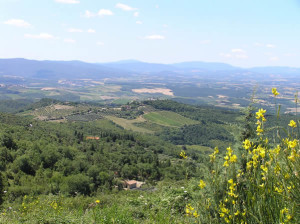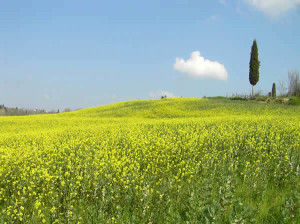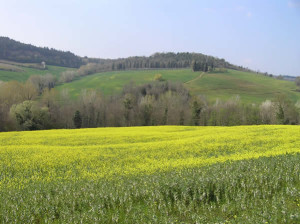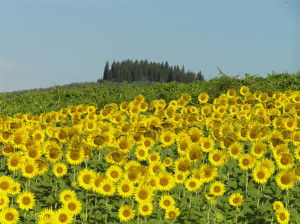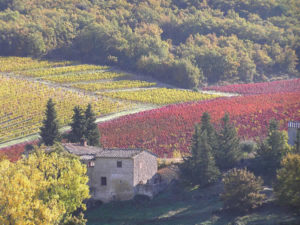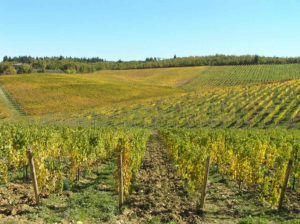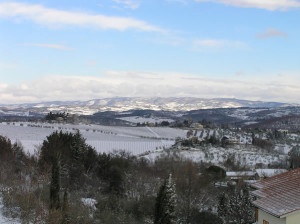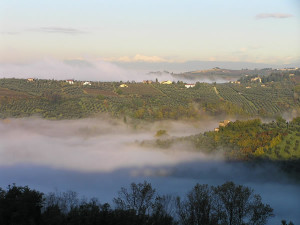Questo articolo è disponibile anche in:
![]() Français
Français ![]() Deutsch
Deutsch ![]() Español
Español ![]() Italiano
Italiano
Chianti, ie the territory which for centuries produced the wine Chianti Classico, is part of the Tuscan hill land situated between Florence and Siena, expertly shaped by man and rich of art, this area is a mosaic of history, nature and art unique in the world. This is a land of ancient traditions, civilized in ancient times, first by the Etruscans and then by the Romans.
A BORDER TERRITORY
In the Middle Ages, Florence and Siena fought fierce battles for control of this territory. During this period arose the typical villages and castles that still characterize the hilly landscape, also since then, the foundations were laid for the cultivation of grapes and olives, which gradually acquired economic importance and international fame.
The Chianti covers about 700 square km and includes the entire municipalities of Castellina, Gaiole, Greve e Radda, and partially the municipalities of Barberino Val d’Elsa, Castelnuovo Berardenga, Poggibonsi, San Casciano in Val di Pesa and Tavarnelle Val di Pesa. In these pages we propose two itineraries in Chianti (Chianti Fiorentino and Chianti Senese) and some aspects of the Chianti countryside in different seasons.
One of the most picturesque areas of Tuscany extends between the cities of Florence and Siena, the Chianti. This area of the region is characterized by rolling hills cultivated with olive trees and vineyards, interspersed with woods, full of ancient castles and medieval villages, Romanesque churches, Benedictine abbeys and Etruscan remains.
FAMOUS HILLS FOR THE PRODUCTION OF WINE AND OIL
This territory is famous for its wine and its oil, the production of wine makes it the best known Italian wine area in the world. Chianti wine is a DOCG (Denomination of controlled and guaranteed origin) wine whose production area extends over most of the provinces of Florence, Siena, Arezzo, Pisa, Pistoia, Prato.
But the real Chianti, the so-called historical Chianti is the territory included exclusively in the southern part of the province of Florence and in the northern part of the province of Siena, this is the area where the most precious wine is produced, the so-called Chianti Classico wine, commonly called Gallo Nero named after the most important production consortium.
The oil produced in the Chianti Classico area is a high quality Protected Designation of Origin (DOP) product, excellent for seasoning and for bruschetta.
A NAME THAT COMES FROM THE ANCIENT ETRUSCAN LANGUAGE
It seems that the name Chianti derives from the Etruscan Clante-i, a name that indicated the high valleys of the Pesa and Arbia rivers. The first records of the use of the name date back to the Middle Ages. The territory became part of the Republic of Florence from the twelfth century. Then, around the twelfth century, Florence created the administrative district of the Lega del Chianti which included the areas of the current municipalities of Radda, Castellina and Gaiole.
Crossed by the narrow valleys of the rivers Pesa and Arbia, the Chianti area is made up of hilly and low mountain areas that have an average height of around 300/400 meters but which rise almost to touch the 900 meters with Monte San Michele (893 meters) the highest peak of the Chianti mountains.
Chianti is crossed by beautiful scenic roads. The most famous of which is the SS 222. The so-called Chiantigiana, the Chianti Classico Oil and Wine Route, which, starting from Florence, crosses the historic villages of Strada, Greve, Panzano, Castellina and reaches Siena. But numerous and all very beautiful are the recommended detours that lead to the villages of Radda in Chianti, Gaiole in Chianti and Castelnuovo Berardenga.
Another itinerary leads to the ancient Benedictine abbey of Badia a Passignano, to the villages of San Donato, Tignano, Barberino Val d’Elsa, to the Romanesque church of Sant’Appiano and to the dome of San Donnino, which reproduces in 1: 8 scale the dome of Florence Cathedral. But we invite tourists to discover and explore the white roads of Chianti. This is where the classic aspects of the area and the peace and tranquility of this magnificent corner of Tuscany are found.
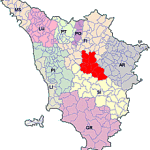
HOW TO GET TO CHIANTI
The Chianti is situated between Florence and Siena, and is easily accessible from both cities, the Motorway Florence-Siena, through it, to reach the area the exits are those of San Casciano, Bargino, Tavarnelle, San Donato, Poggibonsi Nord, Poggibonsi, Colle Val d’Elsa Nord, Colle Val d’Elsa Sud, Monteriggioni.
Car: To reach the region, coming from Florence, take the Raccordo Autostradale Florence-Siena (Florence-Impruneta exit of the A1), on this road, to reach the Chianti region between the exits to be used are: San Casciano, Bargino, Tavarnelle and San Donato.
Coming from Siena, always with the Raccordo Autostradale Florence-Siena, you can exit at Monteriggioni, Poggibonsi Nord or San Donato.
Bus: There are numerous bus links between the towns of Chianti and the cities of Florence and Siena, the companies offering competitive services appear to be the SITA and the Train.
Train: The nearest station is in Poggibonsi, along the line Empoli-Siena. The central station of Florence (Santa Maria Novella) is located about 40 km.
Air: The nearest airport is in Florence-Peretola Amerigo Vespucci, which is located 50 km away. The airport of Pisa Galileo Galilei is 100 km away.
[divider]
[divider]
THE HILLS OF CHIANTI IN SPRING
Here is a series of images of Chianti in Spring. In spring nature awakens, the landscape turns, this is one of the best seasons for visiting the Chianti, in fact the temperatures are not too high, but ideal for relaxing walks in the countryside make to observe the blooming of wild flowers, also the days are long and the sun is high above the horizon until late. Spring, along with the late autumn is the wettest period of the year.
THE HILLS OF CHIANTI IN SUMMER
Here is a series of images of Chianti in the Summer. Summer is a hot period and dry, with temperatures that sometimes exceed 35°C. The green of spring gives way to yellow and brown, dry grass, but sometimes the summer thunderstorms bring relief from the heat prevailing, and often end with beautiful rainbows.
THE HILLS OF CHIANTI IN AUTUMN
Here is a series of images of the hills in Autumn. During this month, the landscape is particularly charming and colorful, thanks to the colors of the vineyards and trees begin to lose their leaves.
Autumn is a good time for a holiday in the hills, in fact, during this season is possible to live directly harvesting on farms, and enjoy the wonderful colors of the hills, with temperatures still mild and pleasant especially in the month of October. While late autumn (November) is one of the wettest periods of the year.
THE HILLS OF CHIANTI IN WINTER
Here is a series of images of the hills in Winter. Winter is the coldest period of the year, winter minimum temperatures are often below 4°C. Rarely, in this area, you may find the snow. Usually no more than two or three snowfalls per year, most likely in February, but also in December, January and March. Winter contrary to popular belief is not the wettest period in this area of Tuscany, which is autumn, but it offers often beautiful days of clear skies, even if cold.
BIBLIOGRAPHY
- AA. VV. “Toscana” Guide Rosse Touring Club Italiano, 2007
- AA. VV. “Firenze e provincia” Guide Rosse Touring Club Italiano, 2007
- AA. VV. “Firenze e il suo territorio. Fiesole, le colline, il Mugello, il Valdarno e il Chianti” Touring, 2013
- cur. Torriti P. “Le chiese del Chianti” Le Lettere, 1993
Questo articolo è disponibile anche in:
![]() Français
Français ![]() Deutsch
Deutsch ![]() Español
Español ![]() Italiano
Italiano

